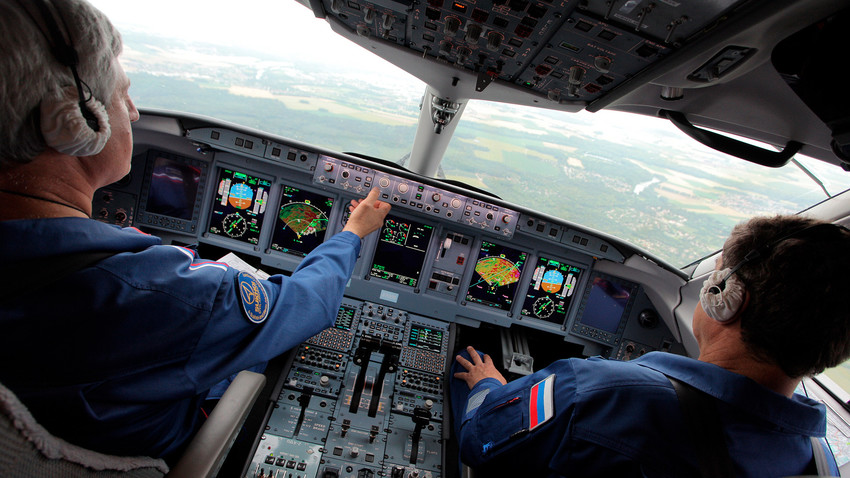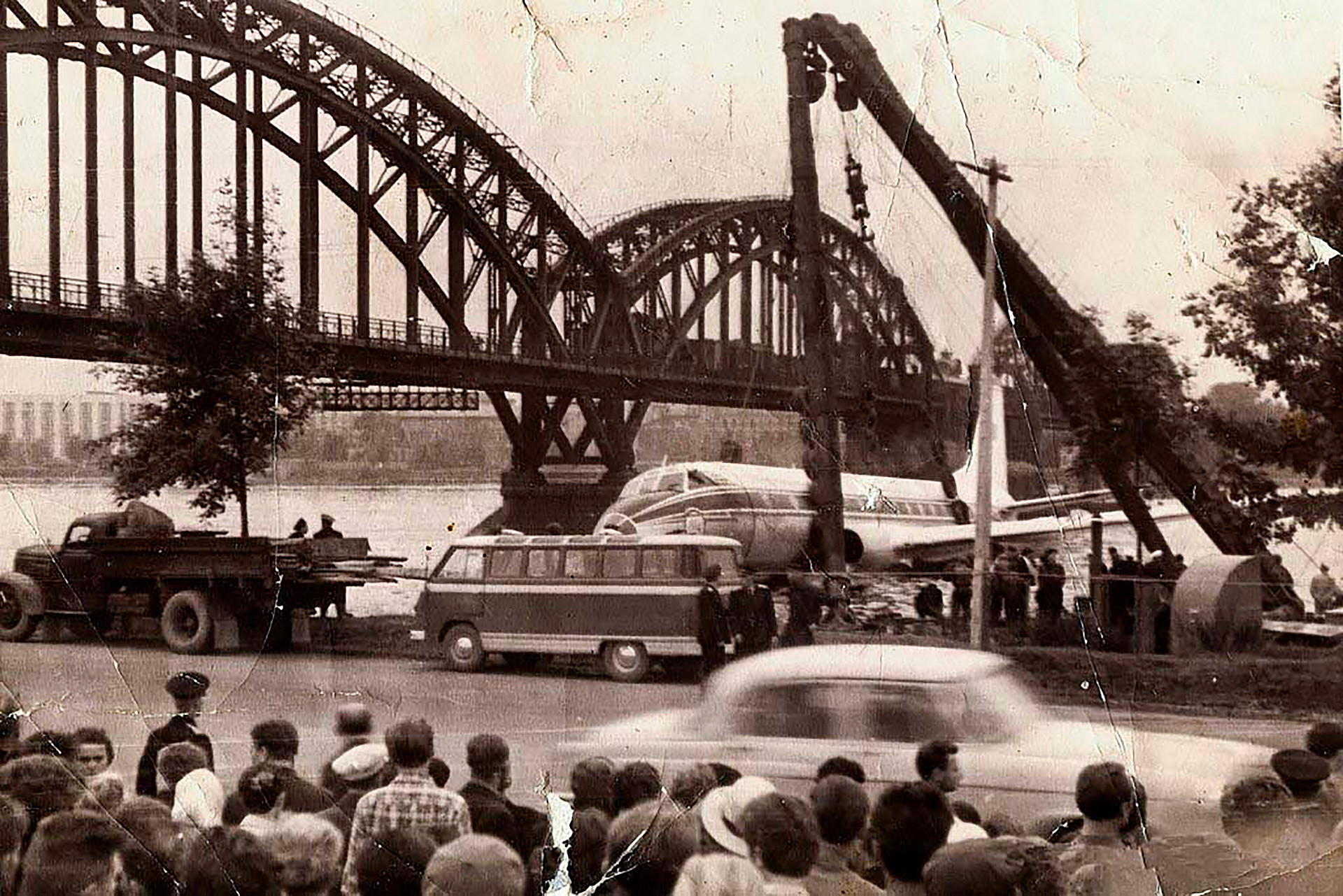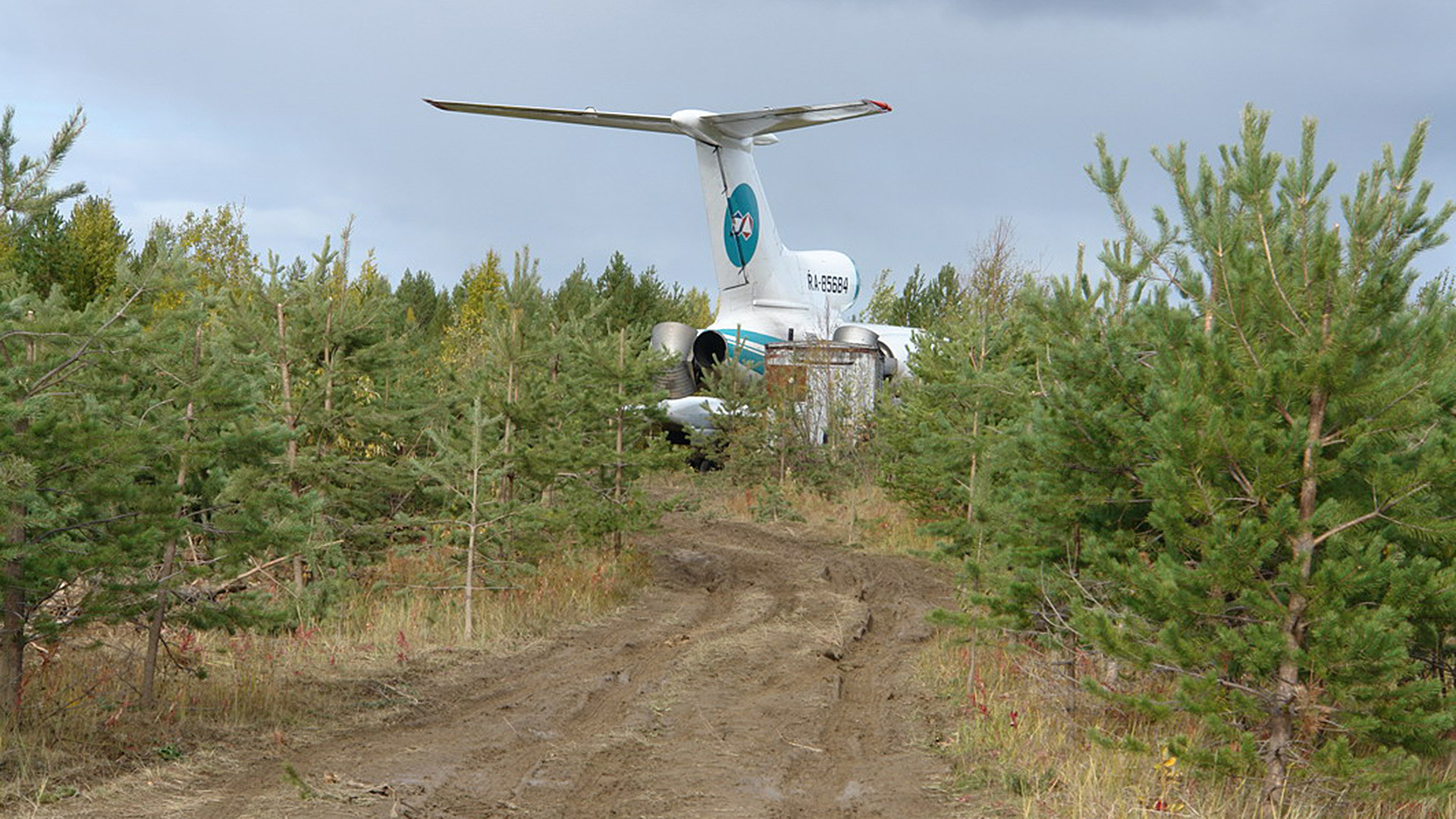
Russian pilots had to demonstrate unbelievable skills to save passengers
Marina Lystseva/TASS“I was on the balcony and saw people running to the Neva River. It was clear something had happened. I was so surprised to see a floating Tupolev Tu-124 plane and its passengers leaving the aircraft on one of its wings,” Leningrad (now St. Petersburg) resident Yury
What led to plane’s ditching, as in the case of the Hudson incident, was the fact that Aeroflot’s Russian pilots faced double engine failure. After taking off from Tallinn in Estonia the crew of the Tu-124 (45 passengers) soon found out that the nose gear was not retracting so the flight - which was bound for Moscow - was forced to divert to Leningrad.
After arriving the plane started circling the city to deplete its fuel in order to make the emergency landing safer. Meanwhile, the crew was desperately trying to unblock the nose gear with a metal pole - but at this point one engine cut out so the captain decided to head straight for Pulkovo Airport, flying right over Leningrad.

A successful ditching is a very rare thing, experienced pilots say
Sergei VershlerHowever, the second engine decided to stop working on the way and the plane did not have enough altitude to fly out of the city. So 27-year-old captain Viktor Mostovoy had no choice but land on the Neva. As the plane descended it passed several bridges, the last of which by just a few meters - and while ditching it nearly hit a
Experienced pilot Yury Sytnik says a successful ditching is a very rare thing: “It’s only performed on a simulator. In real
This time the lives of 81 people were at stake when a Tupolev Tu-154 plane found itself in a tricky situation above the Siberian taiga on Sept. 7, 2010. The Alrosa aircraft suffered a complete electrical failure 3.5 hours into a flight to Moscow, which meant the navigation system stopped working - so
Fortunately, the crew spotted a runaway: An abandoned airfield in Izhma village that for the last 12 years had only been used for helicopters, while for the last seven years it hadn’t even been marked on maps, but amazingly
The thing was that the man in charge of the helicopter pad for all those years had taken care of the runaway on his own initiative. As Sergei Sotnikov later told journalists, the pilot “could not believe his eyes when he saw the runaway - as I had installed the necessary screens and painted the markings.”

The plane overran the runway by 160 m
Mikhail Melnichuk/SputnikHowever, the runaway was too short: Only 1,300 m long while the plane needed 2 km to be sure of a safe landing. To make things worse, the electricity issue meant the wing flaps weren’t working so it was almost impossible to slow the plane down. But there were no other options: Two attempts were aborted at the last minute while on the third the passenger jet landed traveling at 420 km/
“I’d like to thank the crew. We did not have time to get sacred,” one of the passengers said right after arriving in Moscow. Two pilots received the Hero of Russia award, the highest accolade in the country and Sotnikov got a medal.
The most recent incident took place two years ago in the Dominican Republic on Feb. 10, 2016. This time it was not a Russian-built Tupolev, but a Boeing 777 “Jumbo Jet” that belonged to Orenair with almost 400 people onboard.
The plane set off for Moscow when one of its engines caught fire and exploded. "We were in the front part of the plane. The explosion was on the left...The captain said there would be an emergency landing and that we were going back to Punta Cana. He circled for around 40 minutes. The landing was classic. The captain was just great," passenger Alexander Kolotilin later told RT.

Landing a gigantic plane with a lot of fuel with only one engine was a serious challenge for the pilots
Marina Lystseva/TASSIt was a serious challenge landing a gigantic plane with a lot of fuel with only one engine. “The crew’s actions were very professional. The weight of the plane was excessive. One could not use all the necessary means for slowing down as only one engine worked,” said test pilot Viktor Zabolotsky, praising the pilots’ skills.
During the
Read here why Russians applaud on planes.
If using any of Russia Beyond's content, partly or in full, always provide an active hyperlink to the original material.
Subscribe
to our newsletter!
Get the week's best stories straight to your inbox